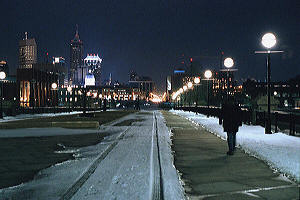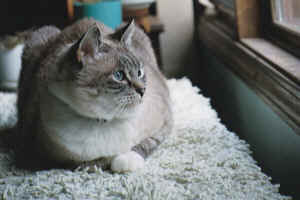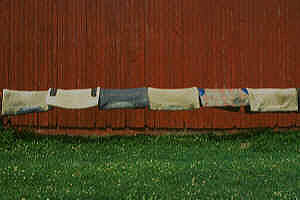 The
most powerful photographs employ have only what is needed to clearly convey
the intended message. None of its elements distracts or detracts,
but takes the viewer to its subject and helps tell story to be portrayed
about the subject. I title my photographs, but only because I like
to. A title should not be a crutch to help tell the story, only to
reinforce what the viewer is already seeing and thinking. Do not
confuse simplicity with having a single element working alone. Although
some exceptional photographs have a single element, many also have multiple
elements working together in harmony to take the viewer to its message.
The
most powerful photographs employ have only what is needed to clearly convey
the intended message. None of its elements distracts or detracts,
but takes the viewer to its subject and helps tell story to be portrayed
about the subject. I title my photographs, but only because I like
to. A title should not be a crutch to help tell the story, only to
reinforce what the viewer is already seeing and thinking. Do not
confuse simplicity with having a single element working alone. Although
some exceptional photographs have a single element, many also have multiple
elements working together in harmony to take the viewer to its message.
Single Subject
 A
photograph should have a single subject (although a single subject may
be more than one object, person, animal, etc.). Multiple subjects
compete for attention and detract from each other. None of them "win."
The classic photograph with multiple, competing subjects is the one of
a group of people standing in front of a scenic area, monument building
or some other subject of interest facing the photographer. It is
both a group portrait and a scenic or architectural photograph. In
the effort to capture both, neither wins. It would be better to capture
the venue (location) of interest with a recognizable person of interest
doing something related to the venue. This can be posed or candid.
Each builds on the other and it becomes a single subject. Or, if
the subject is the person (or people) an recognizable scene can be used
as a backdrop for portraiture, but the trick then is to have the backdrop
out of focus, low contrast, or combination of the two while the person
(people) remain in focus and higher contrast. Sometimes this requires
ingenuity in selecting the "Point of View" (POV) so the subject is recognizable
and enough of the venue is recognizable also. Even then it is still
easy to end up with two competing subjects. The more the person (people)
are interacting with the venue, the better, because it builds the two pieces
into a single subject.
A
photograph should have a single subject (although a single subject may
be more than one object, person, animal, etc.). Multiple subjects
compete for attention and detract from each other. None of them "win."
The classic photograph with multiple, competing subjects is the one of
a group of people standing in front of a scenic area, monument building
or some other subject of interest facing the photographer. It is
both a group portrait and a scenic or architectural photograph. In
the effort to capture both, neither wins. It would be better to capture
the venue (location) of interest with a recognizable person of interest
doing something related to the venue. This can be posed or candid.
Each builds on the other and it becomes a single subject. Or, if
the subject is the person (or people) an recognizable scene can be used
as a backdrop for portraiture, but the trick then is to have the backdrop
out of focus, low contrast, or combination of the two while the person
(people) remain in focus and higher contrast. Sometimes this requires
ingenuity in selecting the "Point of View" (POV) so the subject is recognizable
and enough of the venue is recognizable also. Even then it is still
easy to end up with two competing subjects. The more the person (people)
are interacting with the venue, the better, because it builds the two pieces
into a single subject.
Art and Aristotle
 Having
a single subject does not mean the photograph cannot be multi-leveled.
Again, some of the most powerful photographs are very singular in subject
and the level at which it is portrayed. Equally powerful are photographs
that use the multiple levels working together to convey a fuller, richer
story about the subject. Yet others will only hint at the story and
leave the rest as a mystery for the viewer's imagination. One of
Aristotles better known books is his Metaphysics. It is a
seminal work on philosophy. The book it followed, Physics
(meta means above, after, or beyond in Greek
depending on context), was also a seminal work that stood unchallanged
for centuries until a few fellows like Galileo, Kepler and Sir Isaac Newton
came along. They showed that Aristotle was close but not quite right
about Astronomy and Analytical Mechanics (physical motion). It is
now a cast off work which is sad, because it contains some valuable concepts
for examining the physical universe. (Note that Sir Isaac Newton
didn't quite have it completely right either, which made Albert Einstein
famous when he corrected a few things.) One of the valuable "meta-thinking"
concepts (how to approach thinking about things) in Aristotle's Physics,
Book II, Chapter 3 is his four aitiai. Aitiai translates
roughly to causes which can be used to describe the physical objects
we observe:
Having
a single subject does not mean the photograph cannot be multi-leveled.
Again, some of the most powerful photographs are very singular in subject
and the level at which it is portrayed. Equally powerful are photographs
that use the multiple levels working together to convey a fuller, richer
story about the subject. Yet others will only hint at the story and
leave the rest as a mystery for the viewer's imagination. One of
Aristotles better known books is his Metaphysics. It is a
seminal work on philosophy. The book it followed, Physics
(meta means above, after, or beyond in Greek
depending on context), was also a seminal work that stood unchallanged
for centuries until a few fellows like Galileo, Kepler and Sir Isaac Newton
came along. They showed that Aristotle was close but not quite right
about Astronomy and Analytical Mechanics (physical motion). It is
now a cast off work which is sad, because it contains some valuable concepts
for examining the physical universe. (Note that Sir Isaac Newton
didn't quite have it completely right either, which made Albert Einstein
famous when he corrected a few things.) One of the valuable "meta-thinking"
concepts (how to approach thinking about things) in Aristotle's Physics,
Book II, Chapter 3 is his four aitiai. Aitiai translates
roughly to causes which can be used to describe the physical objects
we observe:
- "Material cause;" what the object is made of.
- "Formal cause;" its structure, shape and form; what it looks like.
- "Efficient cause;" a poor translation to English because it relates to the object's beginning; how it came to be (or how it was built); the "actions" that created it or "context" that created a need for it and prompted its creation.
- "Final cause;" (Greek "telos"); an object's "purpose" or "end" or "goal" and explains what it does or intends to do.
If you have gotten this far without hitting the "Back" button, great. How can a photographer use this concept? These give some levels to consider in how the subject will be portrayed. The photograph can be used to visually convey one or more of the subject's four aitiai. Which depends on what the photographer intends. The most powerful photographs will convey only those the photographer wishes. The rest are excluded to leave them as a mystery or prevent them from being a distraction. An image that captures only texture will convey the "material cause." One that shows only a sihlouette conveys a "formal cause." The last two require portrayal of some form of action, interaction or combination of subject elements that the intended viewer rapidly understands how the subject came to be, or what its purpose is.